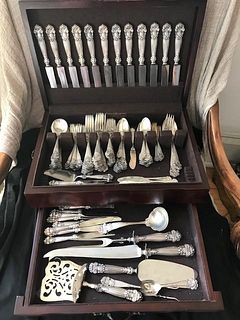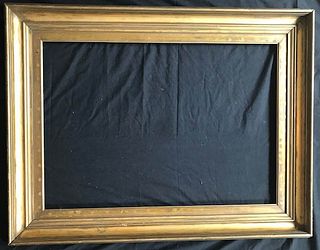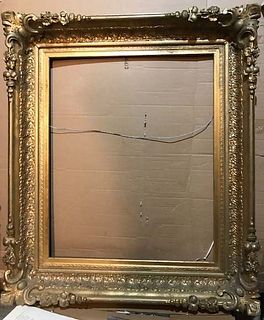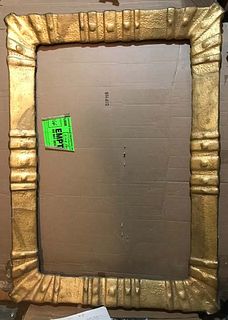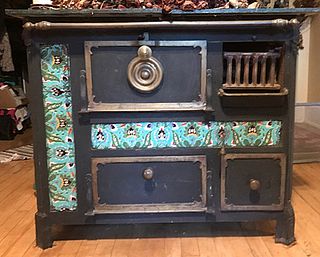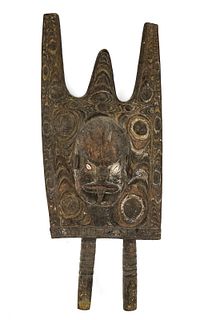19th C. Fijian Totokia Wood War Club, Lotus Head Design
Lot 30
About Seller
Artemis Fine Arts
686 S Taylor Ave, Ste 106
Louisville, CO 80027
United States
Selling antiquities, ancient and ethnographic art online since 1993, Artemis Gallery specializes in Classical Antiquities (Egyptian, Greek, Roman, Near Eastern), Asian, Pre-Columbian, African / Tribal / Oceanographic art. Our extensive inventory includes pottery, stone, metal, wood, glass and textil...Read more
Categories
Estimate:
$2,500 - $4,000
Absentee vs Live bid
Two ways to bid:
- Leave a max absentee bid and the platform will bid on your behalf up to your maximum bid during the live auction.
- Bid live during the auction and your bids will be submitted real-time to the auctioneer.
Bid Increments
| Price | Bid Increment |
|---|---|
| $0 | $25 |
| $300 | $50 |
| $1,000 | $100 |
| $2,000 | $250 |
| $5,000 | $500 |
| $10,000 | $1,000 |
| $20,000 | $2,500 |
| $50,000 | $5,000 |
| $100,000 | $10,000 |
| $200,000 | $20,000 |
About Auction
By Artemis Fine Arts
Aug 22, 2025
Set Reminder
2025-08-22 10:00:00
2025-08-22 10:00:00
America/New_York
Bidsquare
Bidsquare : Indigenous Art - Ralph T. Coe Center, Santa Fe, NM
https://www.bidsquare.com/auctions/artemis-gallery/indigenous-art---ralph-t-coe-center-santa-fe-nm-20324
Featuring works of art from the Ralph T. Coe Center for the Arts in Santa Fe, New Mexico, a non-profit focused on promoting Indigenous Arts globally. All proceeds from the sale of these items will support future grants to Rehoming Program participants. Artemis Fine Arts info@artemisfinearts.com
Featuring works of art from the Ralph T. Coe Center for the Arts in Santa Fe, New Mexico, a non-profit focused on promoting Indigenous Arts globally. All proceeds from the sale of these items will support future grants to Rehoming Program participants. Artemis Fine Arts info@artemisfinearts.com
- Lot Description
Oceania, Fiji, Western Polynesia, ca. 1850s CE. A fearsome and refined symbol of rank, this 19th-century Fijian totokia - or beaked battle hammer - exemplifies the marriage of deadly function and ceremonial authority in Pacific Island weaponry. Crafted from dense, reddish-brown vesi wood, the club's distinctive bulbous head and sharply projecting beak are not only visually compelling but technically engineered to puncture with lethal precision. Though popularly called a "pineapple club," the totokia in fact predates the introduction of the pineapple to the islands, and its form more likely evokes the lotus fruit - a sacred botanical motif. According to ethnographic tradition, the club had dual significance: it served as an emblem of chiefly authority in times of peace, and a refined instrument of execution in times of war. This duality is echoed in the elegance of its long, tapering shaft, which is covered in deeply incised geometric patterns applied with chip-carving techniques. Size: 8.3" L x 4" W x 38.8" H (21.1 cm x 10.2 cm x 98.6 cm)
Favored by elite warriors and often carried by chiefs, the totokia was top-heavy by design, its weighted head concentrating impact through the hardened beak. As noted by Pacific scholar Fergus Clunie, it was intended to "peck" a neat hole into a victim's skull without shattering it - a method that preserved the head for ritual or spiritual purposes, as Fijians believed the skull held mana, or personal power. The ideal blow was a clean puncture - not a crushing strike - a feat that conferred honor and prestige upon the wielder.
The weapon was not merely utilitarian. It was ceremonial, often featured in war dances like meke ni wau, and may have accompanied its owner in death, interred in burial to ensure spiritual continuity. Alternatively, such weapons were passed down as heirlooms, linking lineage and valor across generations. This example reveals a unique history of use: the club's head was at one point severed and later reattached using a visible metal bolt - an act of preservation that underscores the object's continued value. Notably, an old initial K is carved in three places: at the top of the head, on the metal bolt, and near the upper portion of the shaft. These markings may reference a former owner, colonial cataloging, or legacy handling by collectors or warriors alike.
This piece was exhibited in "Hands on... Culture Shock!" at Ralph T. Coe Foundation for the Arts in Santa Fe, New Mexico, USA (Hands-On Curatorial Program 2015) from April 25th, 2015 to December 31st, 2015.
Provenance: Ralph T. Coe Center for the Arts, Santa Fe, New Mexico, USA; purchased from Taylor Dale Gallery, Santa Fe, New Mexico, USA in July 2004
All items legal to buy/sell under U.S. Statute covering cultural patrimony Code 2600, CHAPTER 14, and are guaranteed to be as described or your money back.
A Certificate of Authenticity will accompany all winning bids.
We ship worldwide and handle all shipping in-house for your convenience.
#195953Wear consistent with age and use. Wood exhibits surface wear with chipping to spikes and age-related cracking throughout. An old, stable repair is present at the top section of the club, where the head was once reattached with a metal bolt. The pineapple-form head is slightly loose but remains securely affixed. The initial "K" is carved in three places: on the top of the head, on the bolt, and near the top of the shaft, likely from an early owner or collector. Impressive remaining detail and nice patina to wood.Condition
- Shipping Info
-
All shipping is handled in-house for your convenience. Your invoice from Artemis Fine Arts will include shipping calculation instructions. If in doubt, please ask before bidding for estimated shipping costs for individual items.
-
- Buyer's Premium



 EUR
EUR CAD
CAD AUD
AUD GBP
GBP MXN
MXN HKD
HKD CNY
CNY MYR
MYR SEK
SEK SGD
SGD CHF
CHF THB
THB






